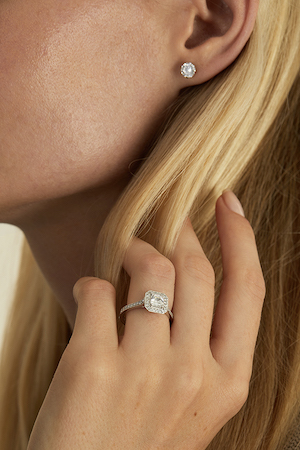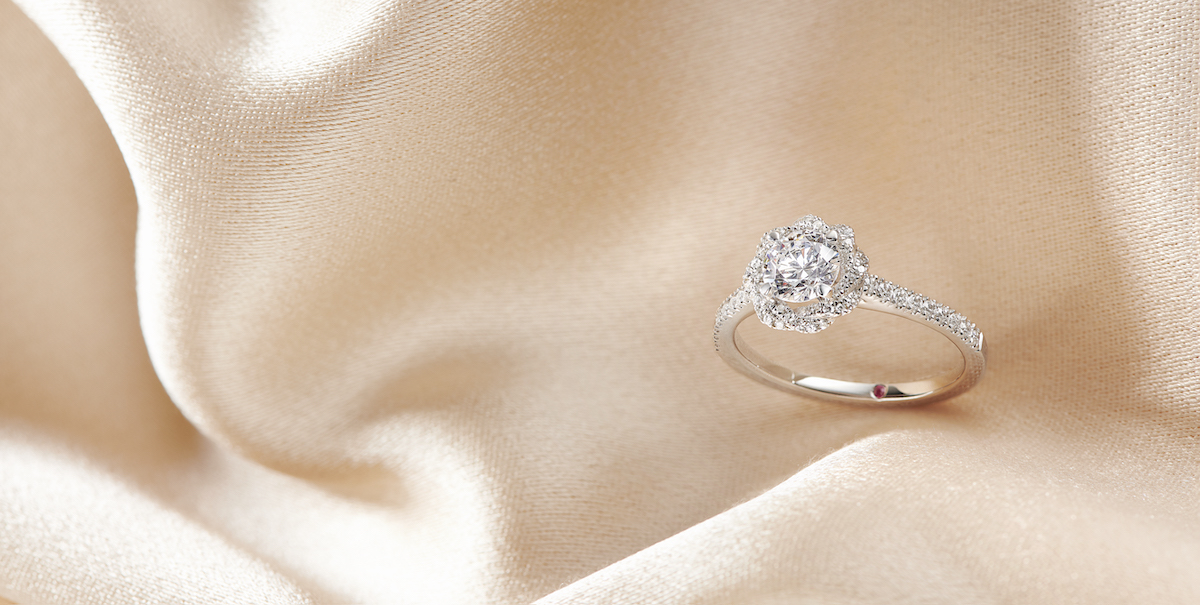Ever since diamond engagement rings became an iconic token of love and commitment in the 1940s, they remain the first thing that comes to mind when one is planning to propose. Diamonds offer outstanding customisation opportunities and it’s easy for proposal planners to get lost in the flood of products. Progressive jewellers are empathising with the consumer–removing any confusion from the process by providing the best information there is to educate and inspire customers.
Any comprehensive diamond search should start by defining diamond quality, or the 4 Cs – cut, clarity, colour and carat weight.

When we talk about the perfect cut, we’re referring to the balance of proportions of brilliance, fire and scintillation achieved by the diamond cutter. A cut grade is given only to a round brilliant diamond shape. A ‘very good’ or an ‘excellent cut’ diamond is achieved by the cutter when the cut is neither too deep, nor too shallow.
Clarity grade is a great place to start when it comes to selecting a diamond, but what is it? When diamonds form deep in the earth, they develop natural birthmarks on their surface and internally–slight irregularities and features that are visible to a skilled grader under 10x magnification. These are collectively known as ‘clarity characteristics’ or ‘inclusions’. Less than 1% of all diamonds are graded as flawless, but most diamonds with a clarity grade of SI1 or above will have an eye-clean appearance.
NOW READ: Our guide to living in Portugal’s Golden Triangle
Colour grading refers to the absence of colour in a diamond. The GIA has a grading system starting from D (colourless) to Z (yellow). D to F graded diamonds are colourless or icy white, F being the most popular choice. G – J graded diamonds are very subtly coloured but this is usually imperceptible to the untrained eye. If you wish to set your diamond in yellow gold or rose gold, a colour grade between the G and J will appear bright white, one of the many ways to balance the 4 Cs to achieve a beautiful engagement ring within budget.

Carat weight is exactly that –weight, not size. The confusion likely stems from the fact that the larger the diamond, the heavier the diamond, the higher the price. Highly sought-after diamond sizes can carry a price premium, but you can save if you buy just shy of 1, 1.5 or 2 carat diamond. It’s also good to remember that elongated diamond shapes like oval or marquise can appear larger in appearance than a round diamond, despite being the same carat weight. Round diamonds tend to be more pricey because they produce the most waste in their cutting process.
Needless to say, there are a number of tips that can help you choose the perfect diamond. You may even wish to go for a fancy coloured diamond or select a lab-grown diamond. Most importantly, make sure it is certified and ethically sourced.
The right diamond isn’t exclusively based on one factor, but a combination of all 4 Cs. When choosing a diamond, focus on the quality that’s most important to you, then work to balance the remaining three.







